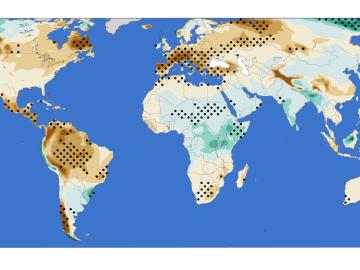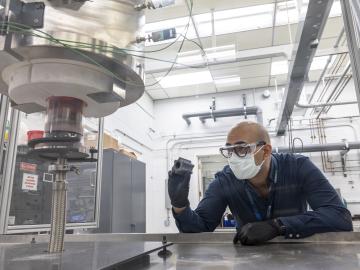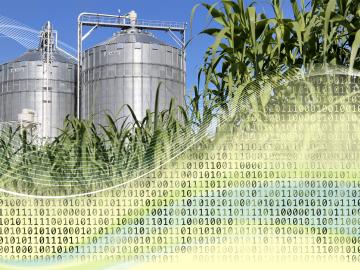
Filter News
Area of Research
- Biology and Environment (23)
- Computer Science (2)
- Electricity and Smart Grid (1)
- Energy Science (43)
- Functional Materials for Energy (1)
- Fusion and Fission (5)
- Isotopes (1)
- Materials (19)
- Materials for Computing (1)
- National Security (23)
- Neutron Science (10)
- Nuclear Science and Technology (1)
- Sensors and Controls (1)
- Supercomputing (28)
News Topics
- (-) Advanced Reactors (8)
- (-) Artificial Intelligence (41)
- (-) Big Data (20)
- (-) Clean Water (11)
- (-) Composites (12)
- (-) Cybersecurity (19)
- (-) Security (14)
- (-) Transportation (35)
- 3-D Printing/Advanced Manufacturing (37)
- Bioenergy (43)
- Biology (58)
- Biomedical (18)
- Biotechnology (9)
- Buildings (30)
- Chemical Sciences (39)
- Computer Science (57)
- Coronavirus (13)
- Critical Materials (11)
- Education (3)
- Element Discovery (1)
- Emergency (1)
- Energy Storage (48)
- Environment (82)
- Exascale Computing (23)
- Fossil Energy (3)
- Frontier (29)
- Fusion (20)
- Grid (32)
- High-Performance Computing (49)
- Hydropower (11)
- Irradiation (3)
- Isotopes (21)
- ITER (2)
- Machine Learning (25)
- Materials (96)
- Materials Science (42)
- Mathematics (2)
- Mercury (4)
- Microelectronics (2)
- Microscopy (25)
- Molten Salt (5)
- Nanotechnology (25)
- National Security (38)
- Neutron Science (54)
- Nuclear Energy (41)
- Partnerships (32)
- Physics (33)
- Polymers (14)
- Quantum Computing (19)
- Quantum Science (21)
- Simulation (35)
- Software (1)
- Space Exploration (10)
- Summit (18)
Media Contacts

A new analysis from Oak Ridge National Laboratory shows that intensified aridity, or drier atmospheric conditions, is caused by human-driven increases in greenhouse gas emissions. The findings point to an opportunity to address and potentially reverse the trend by reducing emissions.

More than 50 current employees and recent retirees from ORNL received Department of Energy Secretary’s Honor Awards from Secretary Jennifer Granholm in January as part of project teams spanning the national laboratory system. The annual awards recognized 21 teams and three individuals for service and contributions to DOE’s mission and to the benefit of the nation.

Three ORNL scientists have been elected fellows of the American Association for the Advancement of Science, or AAAS, the world’s largest general scientific society and publisher of the Science family of journals.

A novel method to 3D print components for nuclear reactors, developed by the Department of Energy’s Oak Ridge National Laboratory, has been licensed by Ultra Safe Nuclear Corporation.

A team of scientists led by the Department of Energy’s Oak Ridge National Laboratory and the Georgia Institute of Technology is using supercomputing and revolutionary deep learning tools to predict the structures and roles of thousands of proteins with unknown functions.

A research team from Oak Ridge National Laboratory has identified and improved the usability of data that can help accelerate innovation for the growing bioeconomy.

The Department of Energy’s Oak Ridge National Laboratory is collaborating with industry on six new projects focused on advancing commercial nuclear energy technologies that offer potential improvements to current nuclear reactors and move new reactor designs closer to deployment.

Scientists at the Department of Energy’s Oak Ridge National Laboratory have created a recipe for a renewable 3D printing feedstock that could spur a profitable new use for an intractable biorefinery byproduct: lignin.

Thought leaders from across the maritime community came together at Oak Ridge National Laboratory to explore the emerging new energy landscape for the maritime transportation system during the Ninth Annual Maritime Risk Symposium.

Carbon fiber composites—lightweight and strong—are great structural materials for automobiles, aircraft and other transportation vehicles. They consist of a polymer matrix, such as epoxy, into which reinforcing carbon fibers have been embedded. Because of differences in the mecha...


